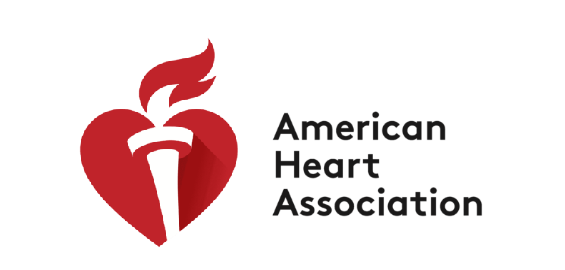| Highlights |
- Cardio-oncology is an emerging discipline that involves a clinical spectrum of cardiovascular problems that may arise during, immediately after, or long after cancer treatment. - Cardiovascular toxicity (CVT) can affect any structural component of the cardiovascular system, but therapeutic agents may have a predominant target. - The objectives are to detect and manage the consequences of TCV and consider cardioprotective strategies to mitigate the damage and avoid discontinuation of cancer therapy. - Long-term follow-up is often required because TCV can appear years later, as seen with thoracic radiation therapy. |
Over the past decade, with the emergence of innovative and more effective cancer treatments, survival has increased. Most oncological diseases occur in patients of the same age group as patients with cardiovascular diseases (CVD) because such patients share similar risk factor profiles.
Cardio-oncology is a discipline in which care for patients with pre-existing CVD or those who develop cardiovascular toxicity (CVT) is provided by a multidisciplinary team composed of cardiologists, oncologists, hematologists, students, specialist nurses, physiologists and pharmacists with the GP support. Various guidelines and consensus statements from international societies are available to advise practitioners.
| Cardiovascular toxicity related to cancer treatment |
Although the classic definition of cardiotoxicity has focused on left ventricular (LV) systolic dysfunction, recent descriptions highlight direct cardiac injury to any of the components of the cardiovascular system, with the potential to cause cardiomyopathy and heart failure, myocarditis, vascular toxicities. , arrhythmias, coronary artery disease, premature valvular disorders, hypertension and thromboembolism.
Indirect toxicity may develop through effects on the thyroid, adrenal glands, pituitary, pancreas, and pulmonary vasculature, with subsequent consequences on the cardiovascular system.
The three different clinical scenarios include acute CVT, defined while receiving cancer treatment ; subacute toxicity, during the first 12 months after completing cardiotoxic treatments and long-term, more than 12 months: cardiovascular complications of previous oncological treatments The most common causes of CVT related to cancer treatment are summarized in Figure 1 .

Fig 1. Cardiovascular toxicity (CVT) related to cancer treatment. Although each therapeutic class has the potential to cause multiple TCVs, some oncology drugs have a predilection for certain components of the cardiovascular system. The most common conventional chemotherapies are alkylating agents (e.g., cyclophosphamide), anthracyclines (e.g., doxorubicin and epirubicin), antimetabolites (e.g., 5-fluorouracil (5-FU) and capecitabine), microtubule binding (e.g., paclitaxel and docetaxel) and platinum-based (e.g., cisplatin). The most frequently used target therapies are human epidermal growth factor receptor 2 (HER-2) inhibitors (e.g., trastuzumab and pertuzumab), proteasome inhibitors (e.g., bortezomib and carfilzomib), inhibitors vascular endothelial growth factor (VEGF) inhibitors (e.g., bevacizumab and sunitinib), BCR-ABL1 inhibitors (e.g., dasatinib, nilotinib, and ponatinib), and Bruton’s tyrosine kinase (BTK) inhibitors (e.g. (e.g., ibrutinib and acalabrutinib). Newer immunotherapies include immune checkpoint inhibitors (e.g., pembrolizumab, nivolumab, and atezolizumab) and chimeric antigen receptor (CAR) T-cell therapy. Radiation side effects typically occur years or even decades after exposure and can affect any cardiovascular structure.
| Clinical trajectory of the cardio-oncology patient |
> Baseline cardiovascular risk stratification assessment
Initial clinical evaluation of cardiovascular risk factors, history of CVD and cardiotoxic therapies, physical examination, electrocardiogram, and laboratory tests are mandatory ( figure 2 ). Although echocardiography is the preferred gold standard imaging modality, cardiac magnetic resonance imaging (CMR) and cardiac computed tomography (CT) may also be necessary.
In the first consultation with a cardio-oncologist, a personalized cardiac surveillance and prevention strategy is formulated, based on the initial risk of TCV, the type and stage of cancer, and the proposed oncological therapy. Prevention strategies include measures to optimize lifestyle choices and mitigate traditional cardiovascular risk factors.

Fig 2. Clinical trajectory of the cardio-oncology patient. The multidisciplinary team follows the patient at the center after diagnosis and during cancer therapy. There has been a paradigm shift in cancer as a chronic disease, because some cancers have sequelae even when they are considered cured. Pretreatment cardiovascular evaluation, detection and treatment of CVD, and surveillance of survivors at increased risk for cardiovascular disease (CVD) are key functions of a cardio-oncologist. CAD = coronary artery disease; ECG = electrocardiogram.
> Diagnosis and follow-up of TCV
Regular clinical evaluations and physical examinations are recommended during cancer treatment to detect early symptoms and signs of TCV. Electrocardiograms are required in patients at risk for cardiac arrhythmias. Cardiac serum biomarkers, such as natriuretic peptides and cardiac troponin, may be useful in monitoring TCV.
Echocardiography can detect deterioration of LV function by measuring ejection fraction with conventional techniques or 3D echocardiography. CMR in patients with poor image quality or when echocardiogram is not diagnostic can detect both functional and structural changes by assessing cardiac function and structure. However, this study is limited by its availability and cost.
Cardiac CT can be used to evaluate the coronary arteries to exclude acute coronary syndromes and evaluate cardiac masses. In some cases, coronary angiography may be required to directly visualize the coronary arteries.
| TCV Management |
> Cardiac dysfunction related to cancer treatment
Cancer treatment-related cardiac dysfunction (CTRCD) could present clinically or be detected in asymptomatic patients during surveillance. Temporary discontinuation of treatment is recommended in patients who develop moderate to severe CTRCD and re-exposure may be considered, using cardioprotective strategies with close monitoring.
Cardioprotective strategies include minimizing drug dosage and, in the case of anthracycline, switching to liposomal anthracycline preparations or pretreatment with dexrazoxane before each additional cycle. Treatment of heart failure according to guidelines is recommended in patients who develop symptomatic CVT or moderate to severe CTRCD.
Recommendations are the use of an angiotensin-converting enzyme inhibitor/angiotensin II receptor blocker (ACEI/ARB) or an angiotensin-neprilysin receptor inhibitor (ARNI), a beta-blocker, a mineralocorticoid receptor antagonist (MRA). , and a sodium-glucose cotransporter 2 inhibitor (SGLT2i) is recommended, with upward titration to desired doses as tolerated.
> Myocarditis
Myocarditis is a rare but serious complication, characterized by severe cardiovascular symptoms, an increase in troponin and electrocardiographic abnormalities (atrioventricular or ventricular conduction disorders, bradycardia and tachyarrhythmias). Treatment with high-dose methylprednisolone should be initiated promptly in hemodynamically unstable patients, pending further confirmatory testing with echocardiography and CMR.
> Acute coronary syndrome
The diagnosis of acute coronary syndrome (ACS) is based on the same principles as in patients without cancer, including symptoms, an early 12-lead electrocardiogram, and serial troponin measurements. Some agents, such as fluoropyrimidines, can induce coronary vasospasm and myocardial ischemia at rest several days after administration.
> Arrhythmias
Chemotherapy, radiotherapy, oncological surgery, cancer itself (invasion), related or pre-existing electrolyte alterations, can increase the risk of arrhythmias. Atrial fibrillation is the most prevalent arrhythmia and the risk-benefit ratio of long-term anticoagulation in cancer patients is a major concern.
Anticancer therapy-induced ventricular arrhythmias are rare and are associated with QT prolongation. Immediate withdrawal of any drug that prolongs the QT interval, correction of electrolyte abnormalities, and close electrocardiographic monitoring are essential.
> High blood pressure
High blood pressure in cancer patients can be caused by their oncological treatments, non-oncological drugs and other factors, such as stress, pain, kidney failure or metabolic disorders. Given their well-established cardioprotective effects, ACEIs or ARBs are first-line therapies in this context.
> Radiation-induced disease of the coronary arteries, valves and pericardium
Many years after radiation therapy, damage to the coronary arteries, heart valves, and pericardium can be detected, especially if the cardiac chambers are in the field of therapy. Dose modulation and appropriate chest protection should be used.
> Cardiac masses and infiltration
Both CMR and CT can help differentiate between a tumor and a thrombus in the cardiac chambers. Thanks to its ability to identify metabolic activity, positron emission tomography (PET) can help recognize primary and secondary tumors
| Long-term follow-up of survivors after treatment: late effects |
In the first year after treatment, a CVD risk assessment should be performed to establish a long-term follow-up plan.
A long-term survivor surveillance strategy is required to identify those at high risk of developing late effects, particularly patients who have received high doses of doxorubicin and prior radiation.
Cardiac rehabilitation for those with functional impairment is also important.
| Conclusions |
Cardio-oncology has become a new subspecialty over the last decade, with the expansion of several comprehensive and multidisciplinary units. The value provided by cardio-oncologists includes the development of personalized management strategies for patients with cancer despite the limited, although growing, evidence base.
Continued interest from oncologists and cardiologists is required to establish new services and for current ones to be developed further. To improve cardiovascular and cancer outcomes, GPs and general practitioners must be aware of the wide range of potential drawbacks. Ultimately, if all hospitals have local cardio-oncology references, this will be a great step forward in the treatment of CT.
















